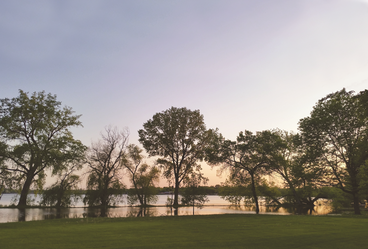
As any Twin Cities gardener knows, the last two summers have been unusually dry in the metro area. But, the past 10 years have actually seen higher than average precipitation—as much as five additional inches per year.
“That extra water has to go somewhere,” says John Nieber, a professor in the Bioproducts and Biosystems Engineering department, who researches hydrologic processes and modeling and the impact of land use activities on water quality. Nieber says if excess water is not shed off the surface into storm sewers and eventually into waterways like rivers, the overflow precipitation can end up going into the upper levels of the ground. When that upper level gets saturated, the local water table rises.
According to the National Geographic Society, the water table is the underground boundary between the unsaturated zone of earth and rock and the saturated zone, where groundwater fills the gaps in rocks and sediment.
This rise can be good for nature, creating healthier wetland habitats. But it can also lead to flooding and other issues that can be extremely damaging to our built environment, including homes.
Nowhere is this challenge more evident in the metropolitan area than in the neighborhoods surrounding Lake Nokomis in South Minneapolis. Over the last decade, neighbors began to complain about multiple water-related issues, including wet and damaged basements, soggy lawns, and damaged infrastructure.
Nieber says there is a misconception among some that flooded basements in the area are being caused by city officials allowing Lake Nokomis to get too high. Instead, he believes the problem may come from a multitude of issues. Continue reading the full story.